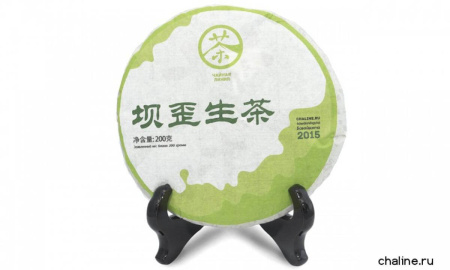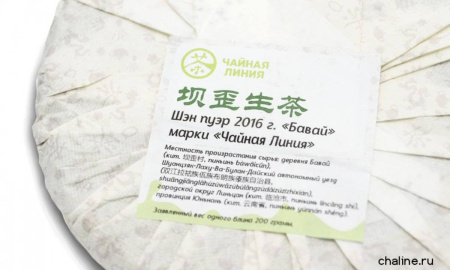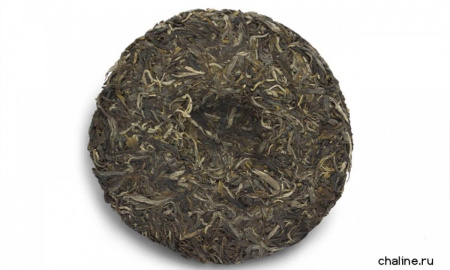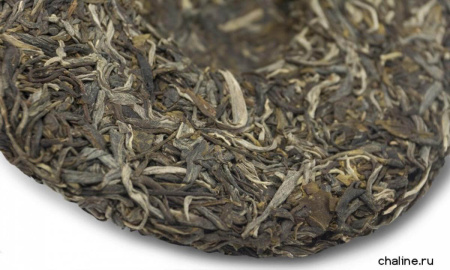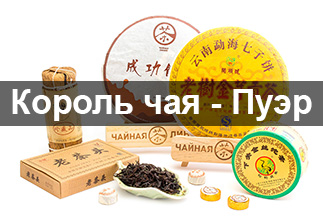-
10 Saturation
-
9 Aftertaste
-
10 Aroma
-
9 Effect
-
7 Balance
-
7 Body
Название: «Бавай шэнча».
Перевод: «Шэн из деревни Бавай»
Кит. 坝歪生茶 пиньинь bàwāi shēngchá
Дата изготовления: весна 2016 года.
Заявленный вес: 200 грамм.
Производство: «Чайная Линия».
Происхождение: деревня Бавай (кит. 坝歪村, пиньинь bàwāicūn), Шуанцзян-Лаху-Ва-Булан-Дайский автономный уезд (双江拉祜族佤族布朗族傣族自治县, shuāngjiāng lāhùzúwǎzú bùlǎng zúdǎizú zìzhìxiàn), городской округ Линьцан (临沧市, líncāng shì), провинция Юньнань (云南省, yúnnán shěng), Китай.
В 8 км от деревни Биндао расположено местечко Бавай. Население представлено китайцами (хань) и народом лаху. Всего чуть больше пары сотен человек из 58 семей. Вся деревня занята сельским хозяйством, в том числе выращиванием чая. В связи с повышением спроса на пуэр в нулевых здесь вырос уровень жизни. В 2006 г. были подведены водопровод, электричество и телефонная линия. В связи с удалённостью и до недавнего времени инфраструктурной неразвитостью фермеры сохранили натуральные методы земледелия.
Внешний вид, аромат и вкус
Сырьё представлено средними по размеру листьями и почками, покрытыми ворсом. Сухой блин обладает приятным тонким ароматом с цветочными нотами. Настой чистый, блекло-жёлтого цвета. Ощущение на языке плотное, баланс во вкусе смещён в сторону танинности с благородной горчинкой, которая переходит в сладковатое послевкусие.
Шэн пуэр из «Бавай» 2016 года от «Чайной Линии» произведён ограниченным тиражом и больше конкретно такого чая никогда не будет, что повышает его коллекционную привлекательность.
Впервые опубликовано 20.05.2017.
Copyright © Chaline.Ru
|
Country
|
China |
|
District
|
Lincang |
|
Provinces
|
Yunnan (云南) |
|
Prefecture
|
Shuangjiang Lahu Wa Bulan Dai Autonomous County zìzhìxiàn) |
|
Habitat
|
Bawai (坝歪) |
|
Manufacturer
|
ООО "Чайная Линия" |
|
Pressing form
|
Bing Cha (Cake Tea) |
|
Fermentation method
|
Естественная |
|
Type of tea raw material
|
Old trees (300-500 years) |
|
The tea is suitable
|
for meditation (relaxing), for tea ceremony (ceremonial), for weight loss, to change consciousness (intoxicating tea), to improve performance |
- Reviews
- Vkontakte
Pu-erh is one of the most unique types of tea, which only gets better with age. Many people, when they first encounter this tea, wondered: why is pu-erh more often found in pressed form (cakes, bricks, tochas), and not in loose form? The reasons for this are related to both history and the practical aspects of storing and fermenting tea. Despite modern technologies that allow the production of loose pu-erh, the shape of pressed cakes remains unchanged. And pu-erh is more often found on sale in pressed form, for example, in the form of cakes or bricks, and loose pu-erh is less common. We will talk about the reasons for pressing pu-erh into cakes in this article.
Puer is a unique Chinese tea that is distinguished by its depth of taste, complexity of aromas and versatility of aftertaste. Its taste characteristics are formed under the influence of many factors, from growing conditions to the brewing method. Let's look at the main ones.
Over time, some consumers who are part of the country's "tea elite" discover mainland Chinese tea. And only a few get acquainted with Taiwanese varieties. The path of a tea person is usually long and thorny, but ultimately it leads to the King of Teas - puer. But not everyone is able to go all the way from ordinary teas to puer and appreciate its qualities.
The tea ceremony occupies a special place in the centuries-old Eastern tradition. And although the essence of this phenomenon remains constant, the nature and external manifestations of the tea ceremony in different nations have their own national characteristics. In each Chinese province, the tea ceremony and the tea used in it are varied: for example, residents of the southern provinces prefer green tea, and residents of the northern provinces - red tea, in Fujian province they more often use Oolong tea, and in Yunnan province Puer tea is widely known.





